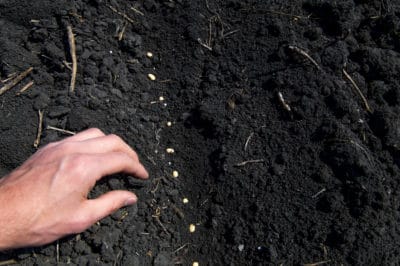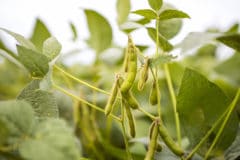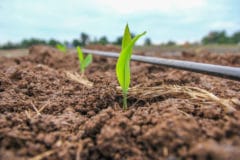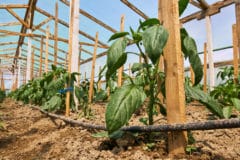Planting Soybeans – Temperature
Soybeans are a warm-season annual and will sulk, refuse to grow or develop problems like mold if you sow them when soils are too cold. Cool weather also has an impact on growth, flower and pod development. On the other hand, temperatures over 85°F (29°C) will negatively affect pod set. In the home garden, plant soybeans about two or three weeks after the last expected frost date.
Planting Soybeans – Daylength
Like onions, soybeans are photosensitive – that is, daylength affects their development. Daylength initiates flowering. Soybeans are considered short-day plants; the shorter days and longer nights that occur after the summer solstice initiate flowering and pod set. The variety planted affects how much daylight a soybean needs for flower production.
Planting Soybeans – Climate
Climate affects soybeans in terms of available sunlight, daylength, temperature and rainfall. Although soybeans can tolerate a little drought, they are not desert plants and produce better with adequate water. However, high rainfall areas can increase the risk of waterlogged soils, molds, rot and mildew. Even if the climate is otherwise good for soybeans, too much water makes for problems.
Best Practices for Garden Soybeans
To give soybeans the best chance of producing in your garden, follow these strategies:
- Prepare soil well by working in well-rotted leaf mold, aged manure or organic compost.
- Add lime to keep the pH between 6.5 and 7.0 and use inoculant.
- Limit additional nitrogen or the beans will focus on leaf growth.
- Water any time the top inch of soil is dry.
- Harvest promptly for green (edamame) or dry beans.
Best Times to Plant Soybeans
Since soybeans are frost-sensitive, you should always wait to plant until the soil is thoroughly warm. In most areas, that means planting about two or three weeks after the last expected frost date. Late April to early May usually provide the right conditions. In short-season areas, choose varieties with shorter maturity dates or cover soil with black plastic to hasten warming.
Planting Soybeans for Deer
Soybeans are often planted in areas where deer and hunting are prevalent. The soybeans provide additional protein to the deers’ diet at a time when other plants are dying down. However, soybeans are frost sensitive, so timing is critical. First, choose a short-season soybean. Daytime temperatures should stay around 70°F (21°C) for at least two months after planting and overnight temperatures must be above freezing.












